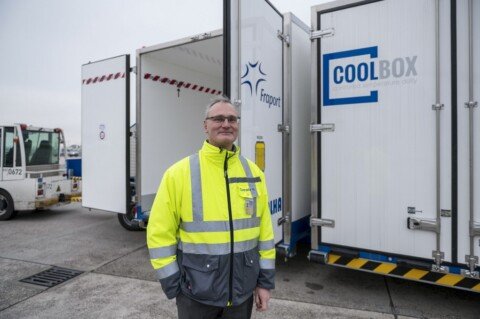A critical challenge in vehicles supply chain management is the synchronisation of sales and marketing requirements and forecasts with parts flowing in from suppliers. This challenge calls for demand management on the front end of the supply chain to be seamlessly linked to material requirements on the back end of the supply chain. This requires an integrated demand management platform that brings together volume and option forecasting, configuration management, and constraint management across short-term and long-term planning horizons. The key determinant is to have a continuous consolidated global view of demand and supply at multiple levels of the product hierarchy. This view should be available in a decision-making environment that shows gaps between demand and supply, the impact of the gaps and process playbooks to resolve the gaps. In a recent interaction, Tomas Rais, Vice President- Logistics at ŠKODA AUTO Volkswagen India (SAVWI) highlighted that there is a great opportunity for companies to reinvent their order-to-delivery processes and make lead time and flexibility a competitive advantage, and that SAVWI has already developed target-oriented action plans— revitalised and ready to compete in the new normal.
In what ways can auto companies use the learnings derived from the pandemic to enhance their risk management efforts?
Supply shock during COVID and demand shock post-COVID has indicated vulnerability once more on the dependencies that automotive industry has in the global ecosystem.
Mobility solution is taking another giant leap driven by— increasing autonomous features, connectivity, e-mobility, shared mobility. This has increased global dependency on supply of electronic parts, batteries, etc. And, as we discuss this, trade imbalance continue to cause service level problem with minimised vessel schedules and reduced flights—movement of goods by air is becoming an even more costly affair.
All these factors indicate that to control direct and even the tier II supply chain is not feasible anymore. It shows that the knowledge of the complete supply chain, its predictability and possible risk knowledge will be the key factors for successful operations of manufacturers.
Digitalisation, ability to use available data, local/regional sourcing, multiple supplier’s policy, etc. may be a new norm to avert risks coming from global dependency.
Opportunities are for those companies that are able to increase logistics efficiency, for example inventory reduction, effective transport network design and returnable packaging. Could you elaborate a bit on these and also anything that I might have missed out pointing?
There is need to carefully derive a balance between logistics efficiency and ability to manage the risk under odd circumstances. The pandemic highlighted weaknesses within some of the most robust and sustainable supply chain models which have evolved over the last few decades.
The current situation (pandemic) with all the difficulties have broke down the traditional logistics concept of big enterprises, where logistics departments serve production and deliver material as per daily/shift -wise plans. The inscrutability of the global ecosystem shows the need for adaptability and flexibility in production as per availability of materials.
How would you rate ŠKODA AUTO Volkswagen India’s transformation of its IT system backbone and legacy infrastructure across procurement, manufacturing, supply chain and logistics?
SAVWI merged into one company in October 2019 from 3 distinct entities. This merger also necessitated a single system solution to enable ‘work as a single company’ and have synergies across all departments with unified processes.
Our goal was to capture essential inputs of current system environment and integrating them with modern solutions to create user-friendly interface without compromising on requirement.
As an example, we can mention Robotic Process Automation (RPA) technologies which we use for mechanisation of repetitive tasks that employees carry out numerous times a day, for periodic data reporting or mass email generation, archiving and extracting.
All these digitisation efforts contain significant progress towards automation and transformative operations leading to further synchronised production, supply chain and logistics.
Blockchain, big data analytics are also in consideration to address residual pain points and define use cases for further evaluation.
What are the right skill sets for the auto supply chain professionals of the future to evolve alongside technology interventions?
Technology interventions like IoT and Artificial Intelligence (AI) will bring higher transparency across supply chain partners and better visibility on physical movement of goods.
However, to derive true benefit supported by technology, supply chain professionals need to be flexible, more aware of internal and external influences, manage complexities, and above all, willing to proactively adapt to changing circumstances. The ‘one formula fits all’ days are gone. Supply chain professionals must focus on enhancing skills to manage and lead the dynamic ecosystem with right approach and attitude to meet strategic goals.
We cannot speak about an individual, but about teams. No professional will see success without a good team and effective teamwork at any time and in any situation. Team spirit plays a big role for the continued success of a company. The ability of the manager to choose the right people for his team and motivating them time to time will reflect in his future and his company’s growth.
Demand is so erratic even now. Does forecasting still make sense?
Forecasting is done with the view to understand full range of possibilities and opportunities under uncertain circumstances. Demands were erratic and will continue to be so. But operating without forecasting measures will mean having no compass.
Forecasting still makes sense, provided that we start calibrating parameters and influence them suitably to present conditions.
What steps to improve Indian railway infrastructure for automotive transportation have been taken in the past few years? Are there any issues associated with finished vehicle delivery by rail over long distances?
The Indian Railways have taken numerous steps to facilitate transportation of finished automotive products via rail. However, the biggest gap is the availability of terminals for loading/unloading of vehicles—impairing their capacities, quality of provided services and suitability of infrastructure to approach the terminals.
The automotive industry is in the nascent stages of using rail network. As a sustainable organisation, we are always looking for ways and means to improve efficiency and using the rail network is on the cards as part of our green logistics strategy. And, we are currently evaluating the feasibility of the same.
Will the four-wheeler segment, especially its electric wing, help the Indian auto industry recover from what seems like a bleak few years ahead?
The government is emphasising on electric vehicles and also offering special benefits on the cost of acquisition in terms of Income Tax. There are many factors ranging from ownership cost, replacement of batteries, charging infrastructure, etc. which will influence choice of consumers. However, government support in terms of subsidies, tax breaks and charging infrastructure will play the key role in success of e-mobility. It is too early to predict India’s response to e-mobility for the entry-level segment where there is the highest volume. Luxury segments where ownership and incidental costs are not relevant may be the driver of market dynamics for e-mobility going forward.
What are the Government directives on Atmanirbhar Bharat and how is the Government supporting this Champion sector?
Atmanirbhar Bharat is a welcomed initiative by the Indian government. Importing parts is not a matter of choice for the automotive sector but a compulsion due to lack of availability of technically and quality good parts from local manufacturers. There has been a good amount of investment in this direction. However, it’s going to take few more years to reach the goals, provided Indian manufacturers are building capabilities to produce world-class products at competitive prices. Still, import dependency for certain group of parts can’t be eliminated due to process complexity, investment and competence— like electronic parts.
Our aim is to support this initiative as much as possible and build Indian products for Indian people from parts made in and by India. This would not only bring the logistics costs down but also limit CO2 footprint for the world environment.







